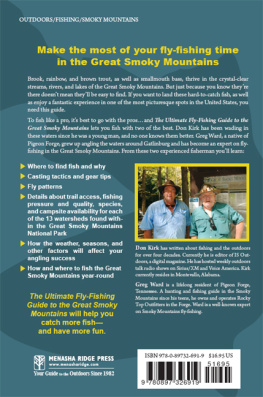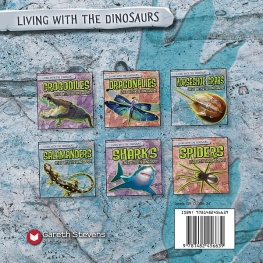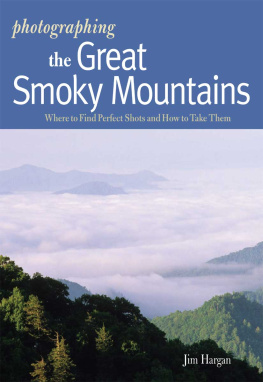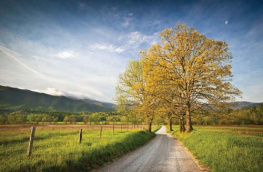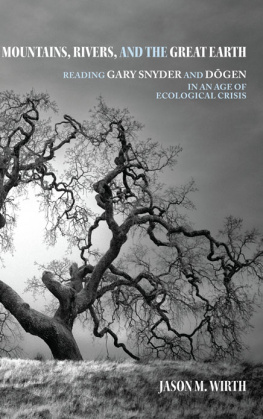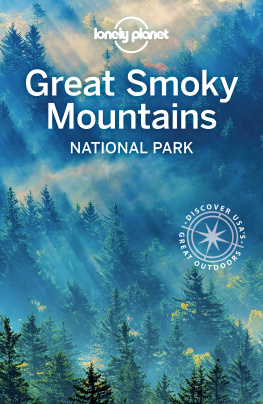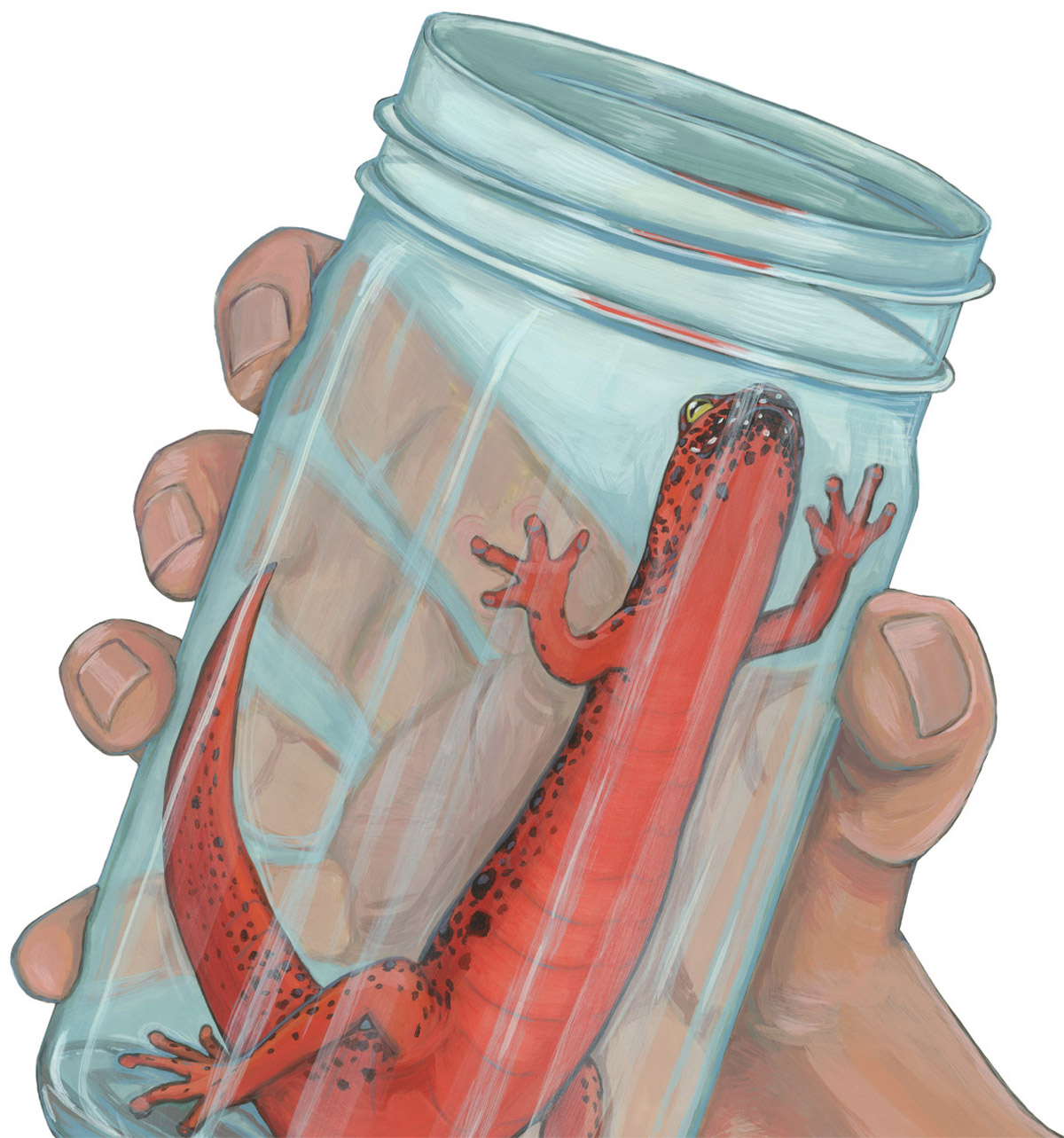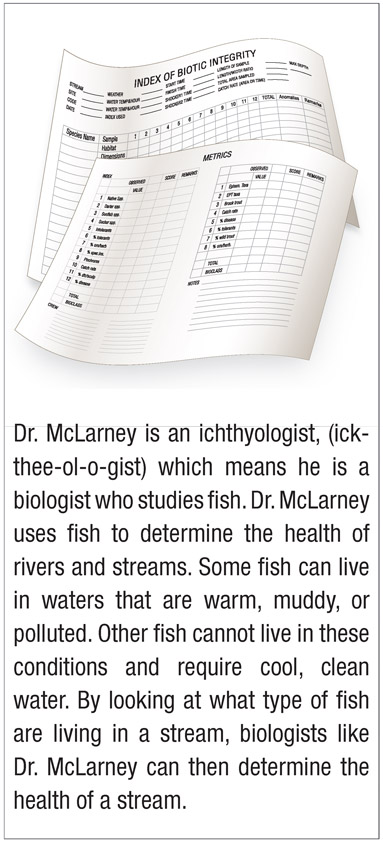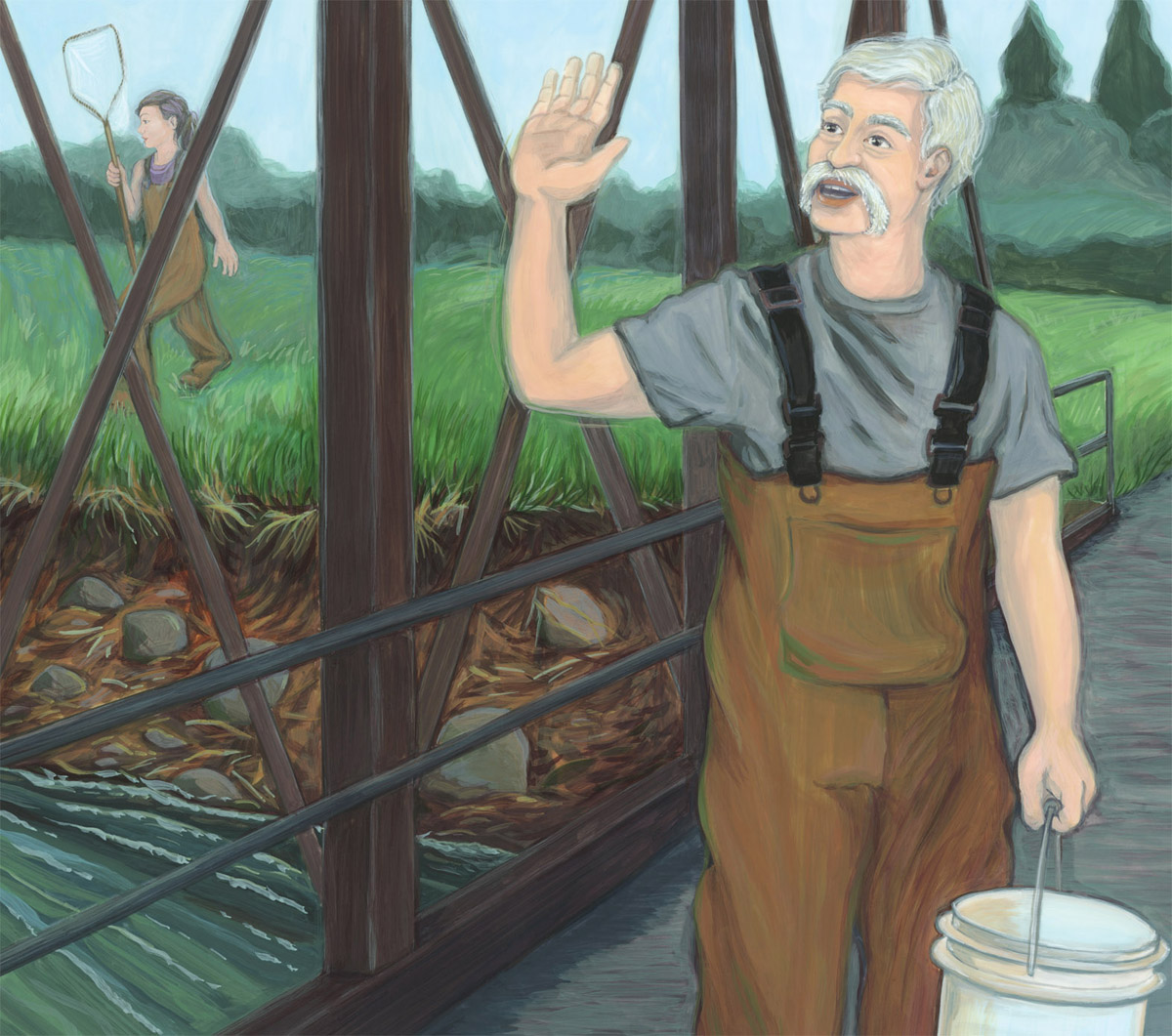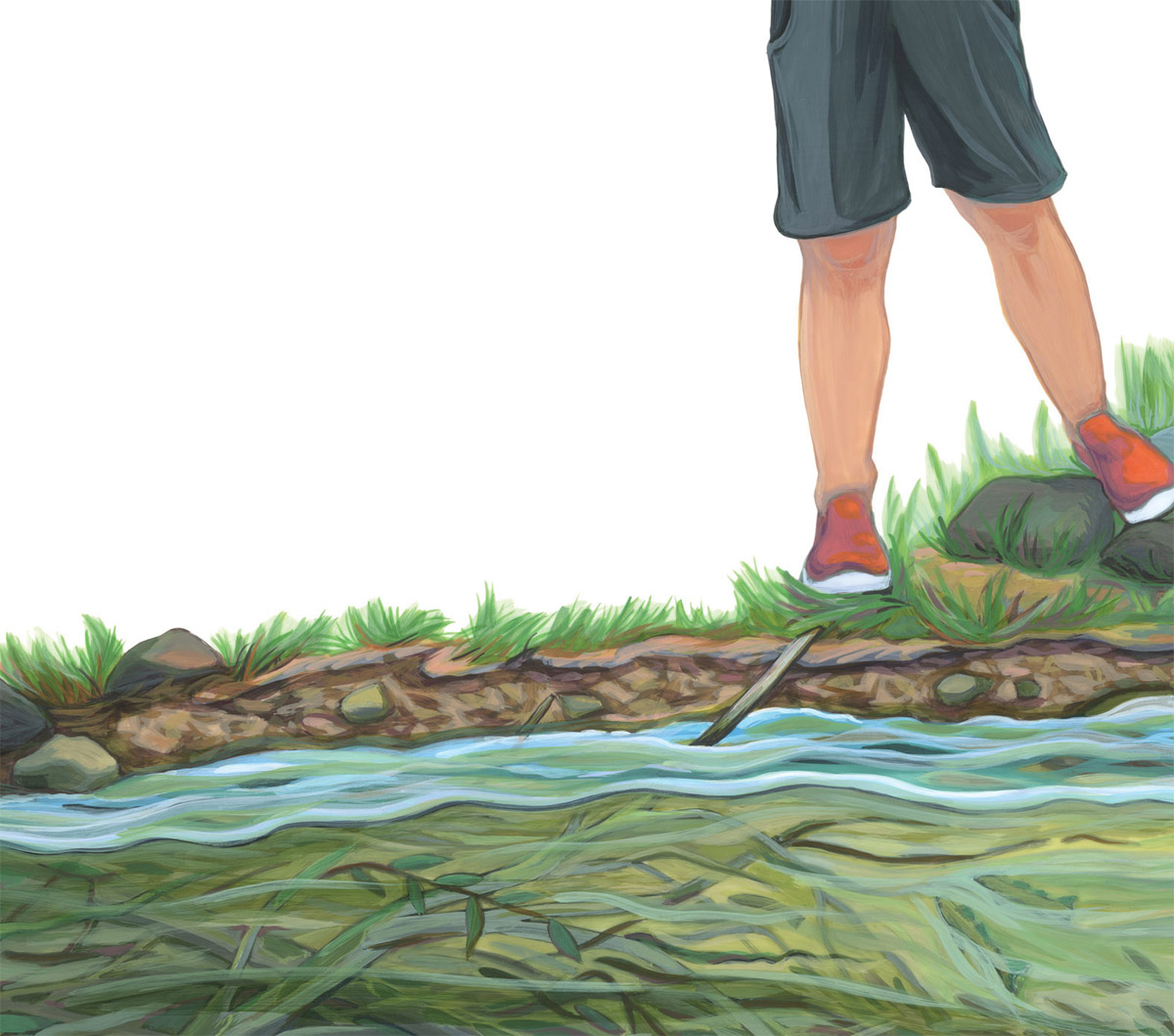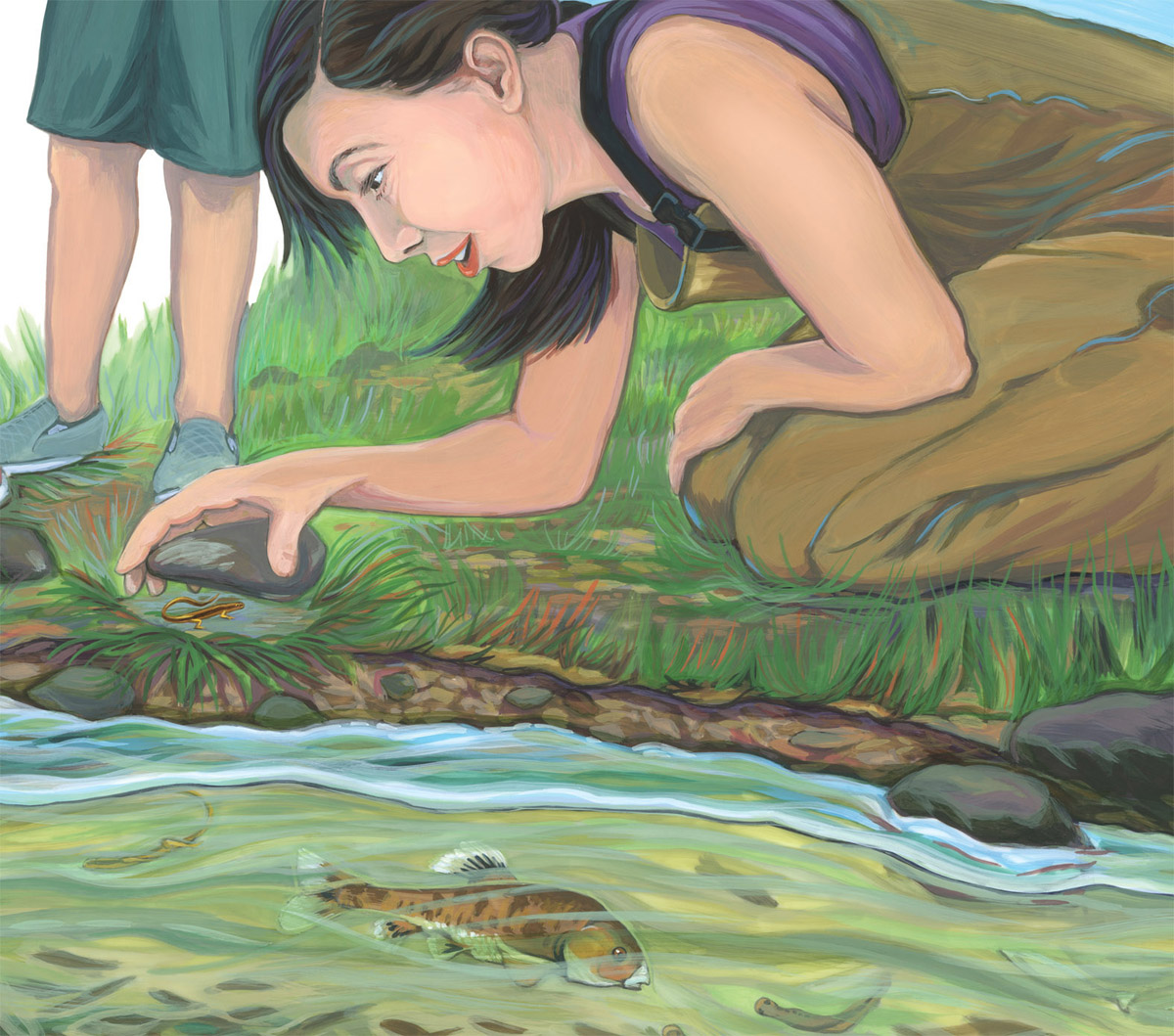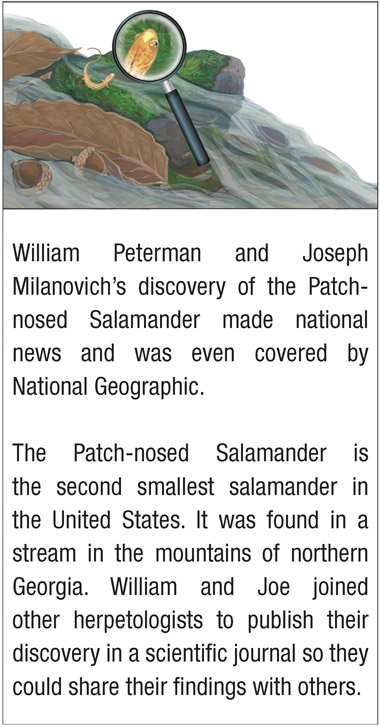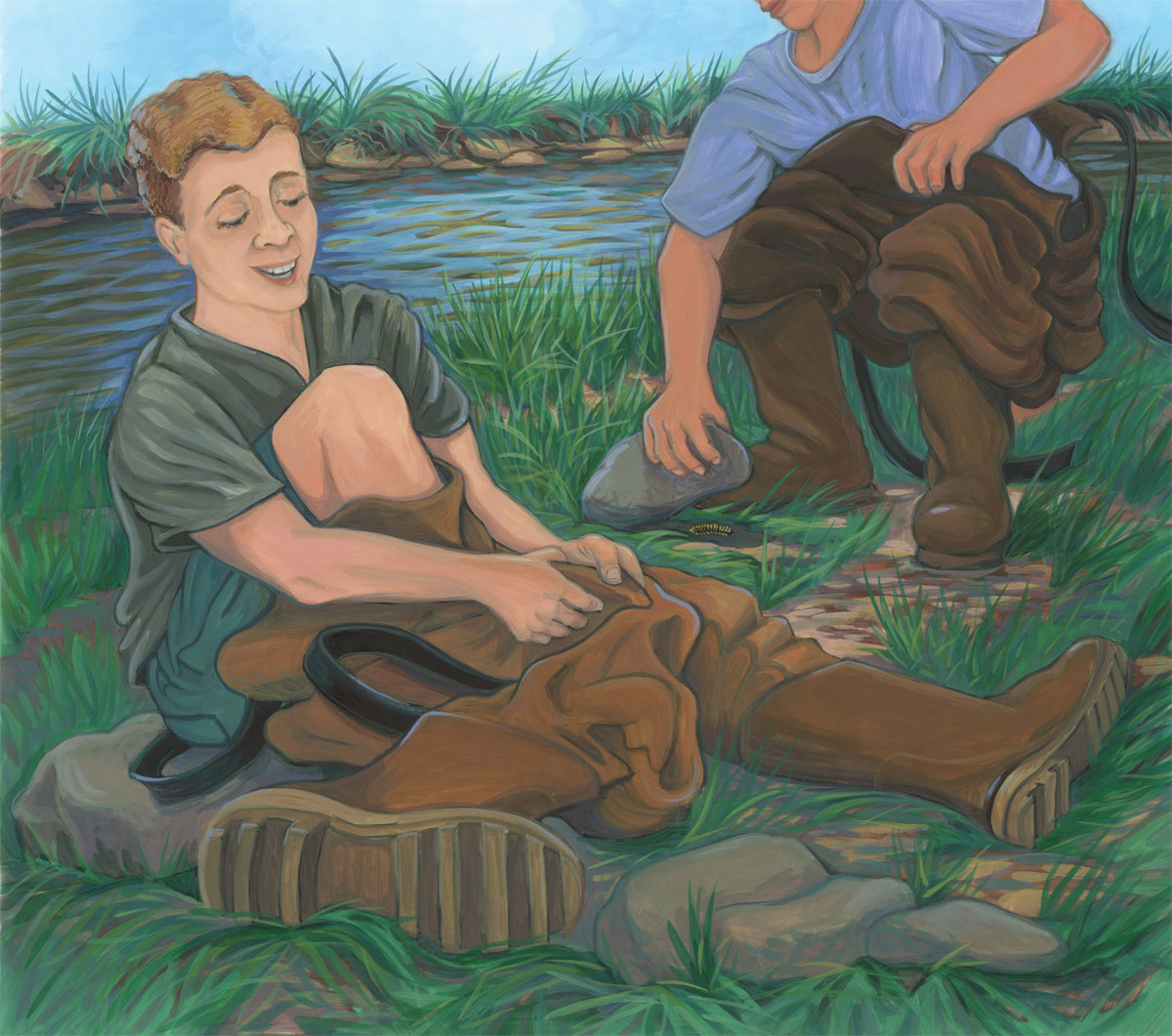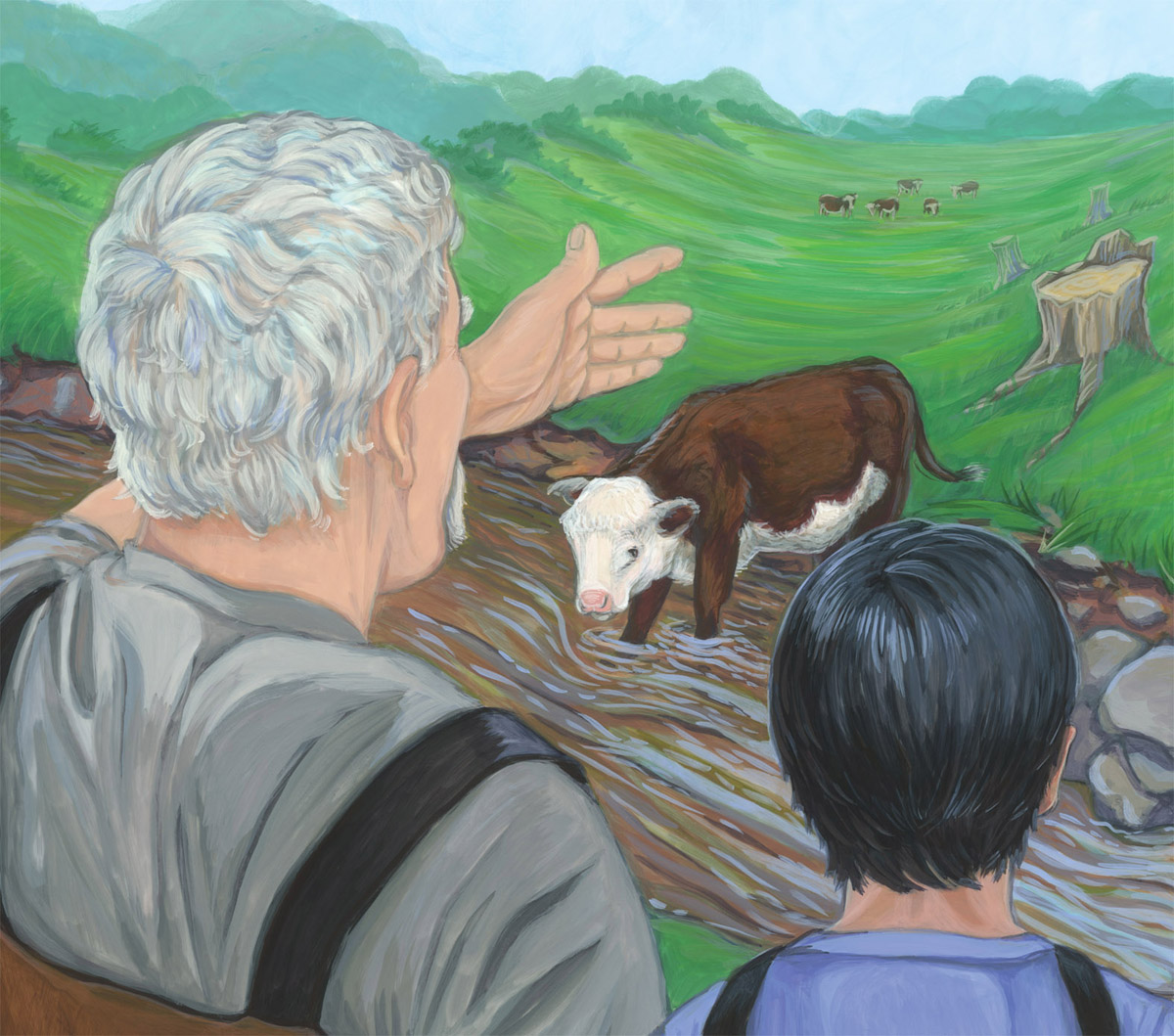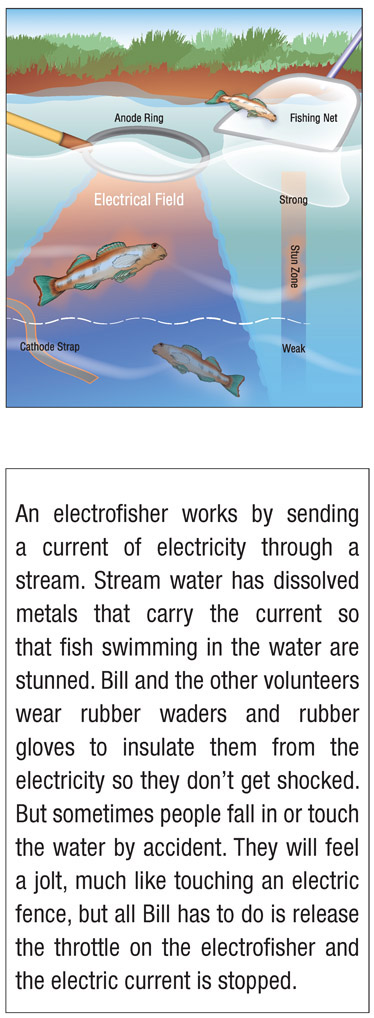ACKNOWLEDGMENTS:
This material is based on work supported by the National Science Foundation under grant no. DEB-0823923. Preparation of this book was supported by the National Science Foundation through Coweeta Long-Term Ecological Research grants (DEB-1440485 and DEB-1637522). Additional funding was provided by the Tennessee Valley Authority from a grant awarded to Mainspring Conservation Trust. Coweeta LTER Lead-PIs Ted Gragson and Rhett Jackson were always supportive of the Schoolyard program and this book. Thanks to Bill McLarney, Kristen Cecala, Joe Milanovich, and Bill Peterman for allowing their story to be told and for providing helpful comments and suggestions throughout the editorial process. Jason Meador provided invaluable feedback about fish and electro-fishing methods. Maribel Maflas photos of fish helped capture the wonderful diversity of life found in our mountain streams. Salamander hunter extraordinaire Todd Pierson provided excellent reference photos of salamanders to assist with illustrations. Theresa Howell was a wonderful and patient editor, helping me pare down the text without sacrificing the story. Series editor Amy Rinehart was supportive at the very beginning and made some helpful suggestions to the story at the start of the process.
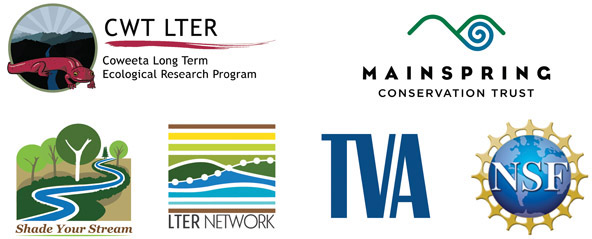
School was out for the summer. When Jonathan and his best friend Christopher werent out in the woods, exploring and building forts out of sticks and leaves, they could be found in the small creek that rushed down the mountain behind Christophers house. There they built small dams, searched for crayfish, and looked for salamanders. They liked to pretend they were explorers and secretly hoped that one day theyd find a new species of salamander that had never been discovered before.
Hey, look over there! said Christopher.
Jonathan looked and saw a red salamander. He waded over to the edge of the bank, placed an empty jar just behind the salamander, and gently nudged it into the jar.
Got it!
Christopher and Jonathan studied the salamander carefully. It was red with black dots and its eyes were golden-yellow. Its chin was covered with dozens of black dots. They had never seen another salamander like it.
I think we should call this species the Blackbeard Salamanderthose black dots on its chin make it look like it needs to shave!
They both laughed as Christopher carefully released the animal back where he found it.
The next day, Christophers mom dropped the boys off by a bridge over a large creek. She had signed them up to help a biologist catch fish for a stream study. Jonathan looked forward to meeting a real biologist, especially one that liked to catch fish. Maybe he also knew something about salamanders.
There were already several other people at the bridge when they arrived. A man with a white handlebar mustache and long gray eyebrows greeted them.
You must be the budding biologists Ive heard about. My name is Dr. Bill McLarney. Bill firmly shook each of the boys hands.
Ive been studying this watershed for over twenty-five years, Bill said. Fish can tell us a lot about the water and habitat quality in a stream. Humans may fish and swim in these waters, but fish live in water. By looking at which kinds of fish live in this stream, we can see if the habitat has changed since the last time I sampled it two years ago.
Today we have a special guest with us, Kristen Cecala. Bill nodded toward Kristen, a young woman with a big smile. Kristen is a graduate student with the Coweeta Long-Term Ecological Research program. She is with us today to look for salamanders as we survey for fish.
Jonathan looked at Christopher. They both grinned. Maybe today they could find out more about that unusual red salamander they had found.
Bill handed Christopher and Jonathan each a pair of waders, rubber overalls with rubber boots to keep them dry when they were in the stream.
While they were trying them on, Jonathan asked Kristen if she had ever discovered a new species of salamander.
Not yet, said Kristen. But my friends William and Joe discovered a new species of salamander in the mountains of northern Georgia. They named it the Patch-nosed Salamander because it had a yellow patch on its snout. Their discovery was big news and gained national attention.
Were they looking for new species? asked Christopher.
No, replied Kristen. They were looking for salamanders as part of another research project.
Thats why I want to be a scientist, remarked Jonathan. Sometimes you can make amazing discoveries just by exploring and looking under rocks,
Before Jonathan could ask Kristen about the red salamander they found yesterday, Bill called out, Okay, gather around. I want everyone to notice that there are few trees along the bank. The trees have been cut down since the last time I sampled fish here.
Jonathan noticed that there wasnt much shade, and the sun overhead was hot. The lack of trees meant that there were fewer roots to hold the soil in place, which led to erosion along the streambanks.
Im firing up the electrofisher. Everyone ready?
Were ready! exclaimed Jonathan. He carried a large bucket of water where the fish would be placed. Christopher carried a net to help catch the stunned fish that rose to the surface.
Jonathan, can you help me by turning the power switch to ON? asked Bill.



